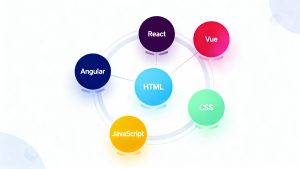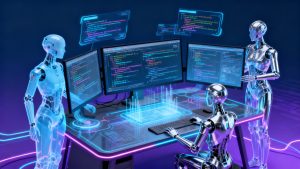At AnsibleFest 2025, Red Hat unveiled a series of groundbreaking updates to its Ansible Automation Platform (AAP), signaling a significant leap forward in IT automation. These innovations focus on integrating advanced artificial intelligence (AI), enhancing workflow analytics, and deepening collaboration with leading infrastructure-as-code (IaC) tools. The result is a more intelligent, efficient, and collaborative automation ecosystem designed to meet the evolving needs of modern enterprises.
AI and Automation: The Model Context Protocol (MCP) and Ansible Lightspeed
One of the most notable announcements at AnsibleFest 2025 was the preview of support for the Model Context Protocol (MCP) developed by Anthropic. This protocol is integrated into Ansible Lightspeed, a suite of generative AI capabilities powered by large language models (LLMs) jointly trained by Red Hat and IBM. These AI models are specifically engineered to automate a wide range of IT tasks, from provisioning infrastructure to troubleshooting complex environments.
With MCP, any LLM or AI agent can soon invoke Ansible Automation Platform to execute playbooks, streamlining the automation of repetitive and complex IT operations. This integration not only accelerates automation workflows but also enables IT teams to leverage the full potential of AI-driven decision-making in their day-to-day operations.
To ensure safe and controlled access, Red Hat has introduced policy enforcement based on the Open Policy Agent (OPA) framework. This allows organizations to establish robust guardrails for any AI agent or LLM accessing the MCP, ensuring compliance and security across automated workflows2.
Economic Value Dashboards: Measuring Automation ROI
In addition to AI-driven automation, Red Hat previewed a new, customizable dashboard for Ansible Automation Platform. This dashboard is designed to make it easier for IT teams to quantify the economic value generated by their automated workflows. By assigning a monetary value to each automation, teams can generate visual reports that reflect the cumulative impact of their efforts based on how frequently the automation runs.
These dashboards can be exported as PDFs or embedded directly into spreadsheet applications, making it simple to share insights with finance teams and other stakeholders. This feature empowers organizations to evaluate the return on investment (ROI) of their automation initiatives and make data-driven decisions about future investments in technology.
Deepening Integration with Terraform Infrastructure-as-Code
Following IBM’s acquisition of HashiCorp, Red Hat announced plans for deeper integrations between Ansible Automation Platform and Terraform, the widely adopted infrastructure-as-code platform. These integrations aim to provide more seamless, end-to-end automation for provisioning and managing IT environment.
Sathish Balakrishnan, Vice President and General Manager of the Ansible business unit at Red Hat, emphasized that upcoming out-of-the-box integrations will enable automated workflows that incorporate Terraform tools. The combined capabilities of Ansible and Terraform offer a highly complementary set of features for automating IT operations, from infrastructure provisioning to application deployment and management.
HashiCorp CTO Armon Dadgar further highlighted that additional Terraform hooks into Ansible Automation Platform are on the horizon. These hooks will allow for deeper integration into production environments, enabling organizations to orchestrate complex workflows that span both platforms.
The Impact on DevOps and IT Teams
While it remains to be seen how many DevOps teams will adopt integrated Terraform and Ansible workflows, the potential for streamlining IT processes is significant. The challenge for many organizations will be aligning different teams—such as infrastructure, operations, and development—around a unified automation strategy. However, the benefits of reducing manual toil and accelerating deployment cycles are compelling.
As more workflows are automated and AI models are increasingly applied, the overall burden on IT professionals is expected to decline sharply. This is particularly important as the number of applications and services deployed in production environments continues to grow exponentially.
The Future of IT Roles in an AI-Driven Automation Era
Despite the rapid advancement of AI and automation, it is unlikely that these technologies will fully replace the need for skilled DevOps engineers and IT t500_prod_administrators in the near term. Instead, the nature of these roles is expected to evolve, with professionals focusing more on supervising AI agents, designing automation strategies, and ensuring the reliability and security of automated systems.
For IT teams, now is the time to identify manual tasks that can be automated using the combined power of Terraform and Ansible Automation Platform, both of which leverage the same core AI model and agent technologies. In many cases, these tasks are the ones that IT professionals least enjoy performing, making automation not only a technical improvement but also a morale booster.
Key Takeaways from AnsibleFest 2025
- AI-Driven Automation: The integration of the Model Context Protocol (MCP) and Ansible Lightspeed enables AI agents to execute Ansible playbooks, accelerating IT automation.
- Policy Enforcement: The Open Policy Agent (OPA) framework provides robust guardrails for AI-driven automation, ensuring security and compliance.
- Economic Value Dashboards: New customizable dashboards help organizations measure and communicate the ROI of their automation initiatives.
- Terraform Integration: Deeper, out-of-the-box integrations with Terraform enable end-to-end automation for provisioning and managing IT environments.
- Evolving IT Roles: While AI and automation will not replace IT professionals, they will transform the nature of their work, reducing manual toil and enabling more strategic focus.
Conclusion: Embracing the Next Wave of IT Automation
Red Hat’s previews at AnsibleFest 2025 underscore the company’s commitment to advancing IT automation through AI, analytics, and collaboration with leading IaC tools. As organizations continue to embrace automation, the combination of Ansible Automation Platform and Terraform—powered by cutting-edge AI—promises to deliver unprecedented efficiency, agility, and value for enterprises worldwide.
Read more such articles from our Newsletter here.



